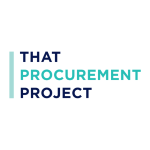From dealing with inflation and managing staff shortages to increasing consumer expectations and continuing global supply chain crisis, these are uncertain times for many business owners.
“It’s very stressful right now, but for many small- and mid-size business owners, now is the time to review your operations and perhaps reconsider the way things have been done in the past,” advised Ashok Menon, expert consultant at That Procurement Project.
Here are a handful of ideas that can help your business on its way to profitability from both the revenue and cost sides of the business.
Rationalise SKUs
Take a long hard look at your SKU range and consider which products are selling for you compared to those that are not.
Menon worked with one client who had more than 160 SKUs as their portfolio, but only 40 accounted for 65 per cent of profits. So, the client re-evaluated the remaining SKUs and reviewed the complexity it added to each category and the customer demand. After a close analysis, the business realised that by reducing the SKU range by 30 per cent, they could focus their energies on the core range and new product development.
“As a result, the client gained significant efficiency on account of streamlining the packaging and reduced the need for the client to source full goods that were not part of the core range,” said Menon, adding that the client was also able to reduce the associated logistics costs.
“The client was able to lift its profitability by four percentage points with minimal impact on revenue projections.”
Revisit your customer base
When many small- and mid-size business owners first launched their businesses, they developed connections with customers which last for years…and they don’t consider reviewing those relationships. It can be a challenging process for some, but in order to manage your cashflow effectively, now would be the time to review your customer base. Shed those that are no longer adding value to your business so that you can focus your energies on strengthening the relationships you have with your key customers.
“You need to say ‘bye bye’ to your non-profitable customers, you can’t keep serving them. Some business owners are very emotional because they have long relationships with their customers. You have to be ruthless and act strategically to sustain your business. You have to focus on how to be more profitable,” explained management consultant Mithilesh Pathak.
Innovate in product and packaging
While you’re reviewing your product mix, think about perhaps creating new categories or SKUs to create new sources of revenue for your business, suggested Menon, adding that changing your packaging format may also boost cost efficiencies too.
One of the clients at That Procurement Project wanted to improve its margins, so together with their development team, the business reviewed its product formulation and packaging. After a series of ideation workshops with key packaging, raw material suppliers, product and marketing teams, they were able to identify new opportunities for the business to pursue and packaging costs were reduced by eight per cent.
Strengthen supplier relationships
Many small- and mid-size businesses have a sprawling supplier network that they have developed over time, but one of their challenges is they don’t have the capability to review this network in a structured manner, making it difficult to find ways to reduce costs, pointed out Pathak.
“This means the same people have been serving them ever since they started, but they haven’t gone back and looked for other suppliers who can help them,” he explained. “They don’t have the know-how to do it in a structured manner, so they’re scared that if it messes up, they won’t be able to meet customer requirements and the business will struggle. It’s time to look for new suppliers and service providers to see what works best for you.”
Optimise your expenditure
Is your business able to continue based on lean operations? Now is the time to review the costs associated with your processes, workforce and supply. How many people are actually required to do certain tasks in your business? With the rising costs in labour, you may not be able to afford to hire as many people as before, but you could offer your employees attractive salaries.
One client of That Procurement Project had spent over $100 million in costs with more than 120 suppliers across raw materials, packaging, labour, logistics and more, said Menon. After a strategic analysis across their spend, customer buying behaviour and processes, they were able to streamline their operations and optimise labour costs by 12 to 15 per cent.
“The client executed a strategic sourcing activity across multiple elements – packaging, raw materials, logistics, contingent labour, maintenance and repair, marketing and some of their contract manufacturing areas and delivered 15 per cent overall in benefits,” Menon said.
“They were able to also rationalise their long tail of suppliers by 40 per cent by implementing clear catalogues and updating their systems enabling their buyers to transact effectively.”
For more advice on how to develop and implement better procurement and supply chain strategies, visit: www.thatprocurementproject.com.











